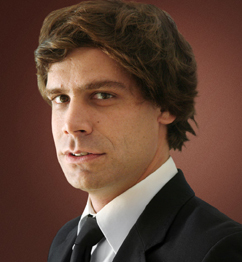Meet Jose Filipe Torres, one of the best-known country branding practitioners in the world.
We had an opportunity to pick his brain on the most pressing issues related to place branding. We asked, he answered. Candidly… This is the first installment of a three-article interview series with Jose Filipe Torres. Without further ado let’s turn to Jose and hear what he has to say…
Who is Jose Filipe Torres? In the field of country branding, he is a genuine trailblazer. In 2002, he developed the Portuguese Trade Investment brand. Back then he was working for Futurebrand, and that was the first ever country-branding project completed by that firm! In 2003, he founded Bloom Consulting, specializing in country branding, city branding and regional branding. Bloom Consulting’s Country Brand Ranking that he developed in 2011 quickly became a popular research tool, used by practitioners from around the world. Over the last decade Bloom Consulting helped develop or manage the brands of Latvia, Poland, Bulgaria, Spain, and Madrid among others. Thanks to its new proprietary tool “Digital Demand”, Bloom Consulting can measure every country’s desirability in terms of attracting tourists and investment.
Jose what made you interested in country branding at the first place?
I was always interested in trade agreements, diplomacy, etc. But what really ignited my passion was… Wally Ollins! (R.I.P.)
He was the father of country branding. He started working in this area almost 20 years ago. When I heard him talking about branding countries, and cities and regions, I said to myself: “This is a fantastic topic!”
National territories had started to blur. The world was becoming flat. Wally Ollins was pointing out that some countries started to realize that they had “assets.” Everything started to click in my mind. I realized that countries would eventually need experts to work on their assets!

Which experts should place branding enthusiasts follow?
Now that Wally Ollins passed away, probably Simon Anholt became the best-known figure in the world. He recently launched the Good Country Index in addition to his previous ranking system.
Then there are less internationally famous, but regionally strong specialists. I guess for enthusiasts, the best place to start would be the Country Branding Wiki. There you will see a broad list of the pioneer thinkers and practitioners.
Finally, there are traditional advertising and branding agencies. They usually get involved in a country-branding project at later stages. So, if you are interested in design or promotion then you can follow those organizations.
Place branding, country branding, destination branding… It seems like there is an influx of terms. What is your take on this subject?
I get that destination branding is more for tourism, but at the end of the day I don’t believe there is a big difference. Probably linguistic nuances have little impact on the actual methodology.
I personally call my services “country branding.” Because any time you work on a geographical branding project, you use the original (country branding) methodology.
Of course, you tweak your methods here and there for city branding projects. But I guess the bigger and the better umbrella term is country branding. Not to mention it is the original one!
What do countries really want when they say “We need a country brand”?
“Why do you want to create or manage your brand?” That’s the real question! Honestly, most countries fail to answer this question.
My point is not to criticize. I just want to highlight a fundamental issue in country branding: Not knowing why you are embarking on a country-branding project…
Is it just a matter of managing perception? Do you want to improve, change, or build your perception? That’s a good starting point. But that’s not “the” why!
Improving the perception should not be the goal. It should be the means to a bigger goal. Instead think why do you want to improve the perception of your country? I guess once you answer that, then you are making progress.
So, why do countries try to change their perception?
Our country branding methodology looks at six different dimensions: tourism, foreign direct investment, pride, talent, public diplomacy, and exports.
When you have a brand -it could be a country brand or a commercial brand- you must have an output that you can measure. For country brands, the output is one of (or some of) the six dimensions.
Of the six dimensions of a country brand, which one is usually the driving force?
You see a mix of everything. In my experience, most countries wanted to build a BIG IDEA that would influence all six dimensions. But interestingly that trend has been reversing over the last 3 years!
From our perspective, building a big idea is not impossible. But it is a very tough challenge. That requires dealing with different stakeholders. The responsibilities and objectives of the people whose goal is to attract foreign direct investment are completely different from those of the tourism bureau. When you have a big idea, they all have to deal with the brand, which is less than optimal.
It is very challenging to find a shared platform that would be ideal for different stakeholders. What happens most of the time is that countries compromise their story, and uniqueness.
What’s the solution then?
I have been championing the idea that countries should create specialist brands. That is to say one brand for tourism and one brand for trade…
It is easier to manage those specialist brands. Also, thanks to their uniqueness and authenticity, they will be more compelling. To me, Poland is a good example. Bhutan is going in that direction. Trinidad and Tobago is another one.
To be continued…



This is a great blogg